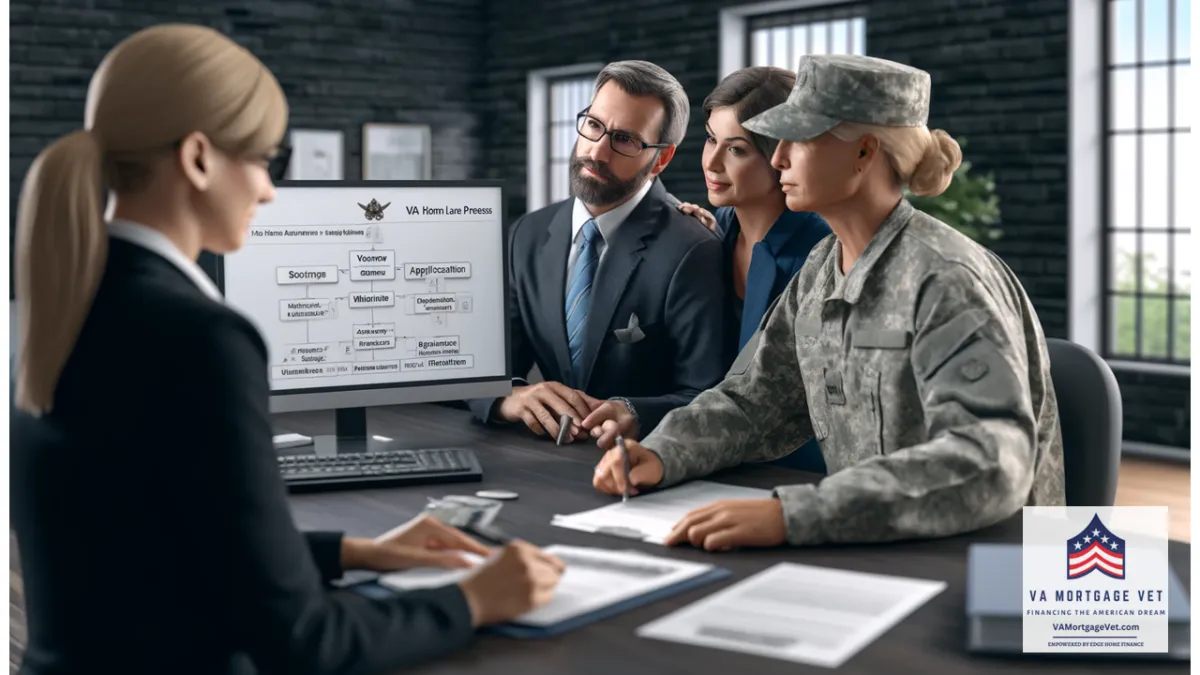
The VA Home Loan Process: From Application to Closing
Navigating the home-buying journey can be daunting, especially for first-time buyers. If you’re a veteran or active-duty service member, the VA home loan program offers a fantastic opportunity to purchase a home with favorable terms. Understanding the VA home loan process, from application to closing, can help you navigate each step confidently. Here’s a comprehensive overview to help you through the process.
"The brave men and women who serve their country and as a result, live constantly with the war inside them, exist in a world of chaos. But the chaos is focused, the chaos is manageable, the chaos is, at least, understandable. What is seldom understandable is the environment in which they return." - Mary Gauthier, American folk singer-songwriter
Step 1: Determine Your Eligibility
The first step in the VA home loan process is to determine if you are eligible. VA loans are available to:
Veterans who meet minimum active-duty service requirements
Active-duty service members
Certain National Guard and Reserve members
Some surviving spouses of deceased veterans
If you're unsure if you meet the eligibility requirements, reach out to me for a no-obligation consultation, and I'll be honored to assist you. Here's a link to my calendar: https://www.travisegan.com/calendar
Step 2: Obtain Your Certificate of Eligibility (COE)
The Certificate of Eligibility (COE) is a critical document that verifies your eligibility for a VA loan. You can obtain your COE through the VA’s eBenefits portal, by mail, or with the help of your lender. Having this document ready is essential for moving forward with your loan application.
Step 3: Find a VA-Approved Lender (Certified Veteran Mortgage Advisor)
Choosing the right lender is crucial. Not all lenders offer VA loans, so it’s important to select a lender who is VA-approved and has experience with VA loans. An experienced lender can guide you through the specific requirements and ensure a smoother process. This is where the Certified Veteran Mortgage Advisor comes in.
Step 4: Pre-Qualification and Pre-Approval: Understanding the Difference
Before you start house hunting, it’s beneficial to get pre-approved for a loan. Pre-qualification gives you an estimate of how much you can afford, while pre-approval is a more detailed process where the lender verifies your financial information and provides a specific loan amount you’re approved for. Pre-approval strengthens your position as a buyer and shows sellers you’re serious.
Step 5: House Hunting
With your pre-approval in hand, you can begin searching for your new home. The key to a successful house hunting experience is the Realtor© you choose. The Realtor© can save you thousands of dollars and save you countless hours of time. Keep in mind the VA’s Minimum Property Requirements (MPRs) as you look at properties. These requirements ensure the home is safe, sound, and sanitary. Work with a real estate agent who has experience with VA loans to help you find a suitable property.
Step 6: Making an Offer
Once you’ve found the perfect home, it’s time to make an offer. Your real estate agent will help you craft a competitive offer. Be sure to include a VA loan contingency in your offer, which states that your offer is contingent on securing VA loan financing.
Step 7: The VA Appraisal
After your offer is accepted, your lender will order a VA appraisal. The VA appraisal is different from a home inspection. It ensures the property meets the VA’s MPRs and determines its fair market value. If the home does not meet the MPRs, the seller may need to make repairs before the loan can be approved.
Step 8: Underwriting
During the underwriting process, the lender reviews your loan application, financial documents, and the VA appraisal to ensure everything is in order. This step may require additional documentation or clarification on certain aspects of your application. Be responsive and provide any requested information promptly to avoid delays. This is where having an experienced VA home loan professional will anticipate roadblocks and steer you around them.
Step 9: Closing
Once underwriting is complete and your loan is approved, it’s time to close. During the closing process, you’ll sign all necessary documents, including the loan agreement, and pay any remaining closing costs. The closing agent will explain each document and ensure everything is correctly signed.
Step 10: Move In
You did it!!! After closing, the property is officially yours, and you can move into your new home! Enjoy the benefits of homeownership with the favorable terms of your VA loan.
Although there are undoubtedly more detours along the way, being aware of the fundamental steps will make the process easier to follow and more pleasurable overall.
Tips for a Smooth VA Loan Process
Stay Organized
Keep all your documents organized and easily accessible. This includes your COE, financial documents, employment verification, and any correspondence with your lender.
Communicate with Your Lender
Maintain open communication with your lender throughout the process. Promptly respond to requests for additional information or documentation to avoid delays.
Work with Experienced Professionals
Choose a real estate agent and lender who have experience with VA loans. Their expertise will help you navigate the process more smoothly and efficiently. Certified Veteran Mortgage Advisors have both experience and work diligently to keep their knowledge fresh to serve the military community.
Understand the Costs
While VA loans offer lower closing costs, there are still fees involved, such as the VA funding fee. Make sure you understand all the costs associated with your loan and budget accordingly.
Conclusion
The VA home loan process, from application to closing, is designed to make homeownership accessible and affordable for veterans and active-duty service members. By understanding each step and staying organized, you can navigate the process with confidence and secure the home of your dreams. Take advantage of the benefits offered by VA loans and enjoy the journey to homeownership.
FAQs (Frequently Asked Questions)
How long does the VA loan process take?
The VA loan process typically takes 30 to 45 days from application to closing, but this can vary depending on factors such as the lender and the borrower’s preparedness. The VA Mortgage Vet team is averaging 18 days from contract to fully approved.
What is the VA funding fee?
The VA funding fee is a one-time fee that helps fund the VA loan program. It can be financed into the loan amount, and veterans with service-connected disabilities are exempt from paying it.
Can I use a VA loan to buy a fixer-upper?
Yes, but the property must meet the VA’s Minimum Property Requirements (MPRs). If the home needs significant repairs, the seller may need to make them before the loan can be approved.
Do VA loans have income limits?
No, VA loans do not have income limits. However, lenders will consider your income to determine your ability to repay the loan.
Can I refinance my VA loan?
Yes, the VA offers refinancing options such as the VA Interest Rate Reduction Refinance Loan (IRRRL) and the Cash-Out Refinance Loan, which allow you to refinance to a lower interest rate or access your home’s equity.
For further advice on how to make sure your VA home loan process goes as fast and smoothly as possible, please read our article titled: Top 10 Tips for First-Time VA Home Loan Applicants
